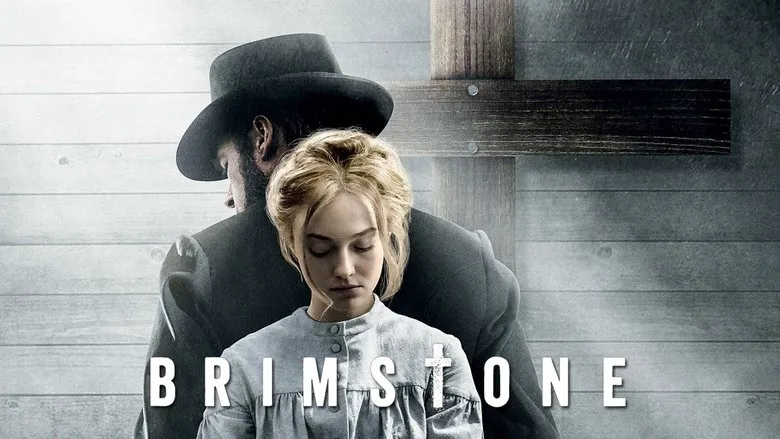A Grim Feminist Western: Exploring Female Suffering in the Wild West
Brimstone is a historical drama set in the Wild West that unflinchingly depicts the various forms of suffering endured by women during that era. At its core is a silent young woman named Liz (Dakota Fanning) who lives with her husband, daughter, and stepson. When she assists a neighbor during a difficult childbirth, she is forced to make a harrowing decision – to kill the newborn to save the mother’s life. This act draws the attention of a local preacher (Guy Pearce), who begins to relentlessly terrorize Liz, far exceeding the bounds of typical religious condemnation.

A Stark Contrast to Romanticized Westerns
While many American directors who tackle Western films often imbue them with a sense of nostalgia for a time perceived as the epitome of national individualism, Brimstone offers a starkly different perspective. Director Martin Koolhoven, hailing from the Netherlands, presents a Wild West devoid of romanticism. Instead, he portrays it as a nightmarish period defined by the constant and pervasive abuse of women.

An Epic of Violence and Dread
Clocking in at nearly two and a half hours, Brimstone is an epic exploration of brutality. The film is structured around two primary elements: graphic violence, predominantly perpetrated by men, and the agonizing anticipation of when the next act of male aggression – be it with a gun, knife, or whip – will occur. Koolhoven uses this extended runtime to create a comprehensive catalog of cruel, elaborate, and often perverse forms of abuse. The film delves into psychological torture, rape, sadistic acts bordering on murder, mutilation, slow and swift executions, beatings, and, disturbingly, incest with minors.
While not all of these horrors are explicitly shown on screen, and the director doesn’t revel in the gruesome details, the film’s implications and the sounds of suffering are often enough to drive viewers away.

European Production, Universal Themes
Shot entirely in Europe (Spain, Hungary, Germany, and Austria), the film initially sought Hollywood investment but ultimately secured European funding.
The Film’s Core Message
Beneath the layers of violence, Brimstone carries two central themes: the condemnation of violence against women and girls, and the corrupting nature of absolute power. The film equates “absolute power” with the various forms of male dominance over women – the power of a husband, a father, a law enforcement officer, a preacher, and even a brothel patron. The nameless Preacher embodies many of these corrupting influences, but the film also features other men who exhibit similar behavior. Even those who appear relatively angelic in comparison are far from flawless. Brimstone makes it clear that the Preacher, despite his extreme mania, is not an anomaly but rather a product of a deeply flawed system.

Women as Victims and Survivors
The women in Brimstone are divided into those who passively endure abuse and those who actively resist or attempt to escape. Liz belongs to the latter group, and the film celebrates her resilience and unwavering spirit. However, her strength doesn’t shield her from suffering, and she is often treated as a plaything by her tormentors. The film avoids a simplistic happy ending, though a glimmer of optimism emerges in the epilogue.
 .jpg “Brimstone Movie Still”)
.jpg “Brimstone Movie Still”)
A Powerful, but Overwhelming Experience
Brimstone is undeniably a powerful film, perhaps even excessively so. By the midpoint, the constant barrage of suffering begins to desensitize the viewer, exceeding the emotional capacity for empathy. The second half of the film becomes a test of endurance, marked by nervous chuckles at each new act of sadism and a growing anticipation for the ordeal to end.
While Koolhoven succeeds in shattering the romanticized image of the Wild West with his bleak and skillfully crafted film, the sheer volume of violence may alienate viewers who already understand the inherent wrongness of abusing and killing women. The film’s intensity risks attracting those with morbid fascinations rather than fostering genuine reflection.